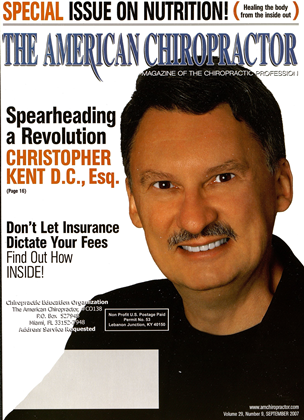GI.UTATIIIOM-: IS VV1UIXY FOUND IN ALL FORMS OF LIFR AND PLAYS an essential role in the health of organisms, particularly aerobic ones. In humans, animals, and plants, glutathione is the predominant non-protein sulfhydryl group and functions most especially as an antioxidant, keeping its own sulfhydryl (-SH) groups and related proteins in a reduced (non-oxidized) condition.1 : Though there are undoubtedly multiple functions for glutathione yet to be appreciated, we do know that glutathione is: • a co-factor for Ihc gluta/hione peroxida.se.s, which are crucial selenium-containing antioxidant enzymes. • a co-factor for glulathione S-tnmsferases, enzymes which arc involved in the detoxification of xenobiotics, including carcinogens. • involved in the regeneration of ascorbate (Vitamin C) from its oxidized form, dehydro-ascorbate? Glutathione, itself, is a non-essential nutrient composed of three amino acids: gliitamic acid, glycinc and cysleine or, more exactly, the tripeptide L-gamma-glutamyl-L-cysteinylglycine. Availability of cystcinc is a limiting factor in the liver's synthesis of glutathione. Chronic functional glutathione deficiency is associated with immune disorders, an increased incidence of cancer and. in the case of HIV disease, probably accelerated pathogenesis of the disease.4 f Acute manifestations of functional glutathione deficiency can be seen in those who have taken an over-dosage of acetaminophen (Tylenol). A vital role of glutathione is the maintenance of a normal rcdox state of the liver. An overdose of acetaminophen leads to its metabolism into large quantities of N-acetyl-bcnzo-quinoncimine (NABQI) in the liver. NABQI depletes hepatic glutathione stores, placing an enormous oxidative stress on the liver, leading to liver failure.'' N-acetyl-L-cysteine N-acetyl-L-cysteine (NAC) is integral to the treatment of acetaminophen overdose. This is due mainly to its ability to regenerate liver stores of glutathione. NAC is a bioavailable delivery form of L-cysteine, which serves as a major precursor to the antioxidant glutathione. but its half-life is only thirty minutes."s Therefore, its use as a supplement to enhance glutathione levels is limited. Alpha Lipoic Acid Alpha-lipoic acid (ALA), which is synthesized in mitochondria and also requires L-cysteine, appears to participate in the recycling of glutathione.'1 There is extensive animal work showing that lipoic acid, by supporting glutathione levels, can exert significant protective effects against oxidant damage related to ischemia-rcperfusion injury.1" More research may be needed to further elucidate these mechanisms and determine whether these results will apply in humans. Reduced Glutathione Glutathione, as such, is present in the diet in amounts usually less than 100 milligrams daily. It does not appear that much of the oral intake is absorbed from the intestine into the blood, at least in humans. However, there is an occasional study that does show an increase in circulating glutathione after oral administration of reduced glutathione."111"14 There is greater evidence that glutathione may be absorbed into the enterocytes, where it may help repair damaged cells.15 Patents have been submitted for reduced glutathione in a liposome claiming enhanced absorption."' Organic L-Selenomethionine Glutathione formation requires an adequate level of selenium. Selenium belongs to the sulfur group of elements which includes oxygen, tellurium and polonium. It is an essential trace element in human and animal nutrition. L-selenometliionine or L-selenocysteine are selenoproleins necessary to the endogenous production of glutathione peroxidases (GSHPx 1-4).'7-"1 There appears to be an inverse relationship between coronary heart disease and selenium intake. The possible anti-athero-genic activity of selenium may be accounted for, in part, by its antioxidant activity. Glutathione peroxidase may protect low density lipoprotein (LDL) from oxidation, thereby inhibiting athcrogenesis and platlet aggregation. {Lipoperoxides impair prostacyclin synthesis and promote thromboxane synthesis).1'1 Undenatured Whey Protein and Colostrum Undenatured whey and colostrum proteins' antioxidant, dctoxication and immunological effects arc in no small part likely related to the ghilamylcysleine groups which act as the substrate fox glutathione (GSH) synthesis. These cystine groups needed for the intraccllular conversion to cysteine are in whey and colostral sub-fractions.:" However, this highly bioavailable, double bonded cystine portion is very thermo-labilc. Dena-turization by heat will, therefore, greatly inhibit the ability of whey proteins to act as precursors to GSH synthesis, though not affecting the biological value (BV) of whey as a protein nutrient, as such.:| Conclusions Reduced glutathione is the major endogenous antioxidant and detoxication peptide. Its hepatic production and intracellular levels may be enhanced in the following ways: • NAC, 200 mg, 3 or 4 times daily • Reduced glutathione, in liposome: 50-200 mg, once or twice daily • Selenium, which is abundant in garlic, onion, broccoli, whole grains and. most especially. Brazil nuts, has an optimal daily dosage at perhaps 200 meg a day.:: • Whey protein, undenatured, 10-15 gm, 1 to 3 times a day • Colostrum, whole, 2 gm, 1 to 3 times a day. A palatable functional food formula of undenatured whey and/or colostrum, combined with some of the above nutra-ceuticals. may be both the most clinically efficacious and nutritionally complete way to enhance endogenous glutathione production. John H. Mallei; D.C., oversees physician and consumer education for BioPhanna Scientific, creators of Nano-GrcenslO. Dr Mahcr maintained an active chiropractic practice for 25 years. He has taught nutrition to health professionals nationally for the past 15 years. Dr. Maher is past post-graduate faculty of NYCC Academy 0/ Anti-Aging Medicine, a Diplomate of the College of Clinical Nutrition, and a Fellow of the American Academy of Integral ive Medicine. To learn more visit www. nanogreens. com. For complete reference listing please visit our website at wwww.theamericanchiropractor.com. |
 View Full Issue
View Full Issue






